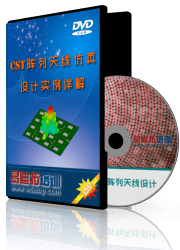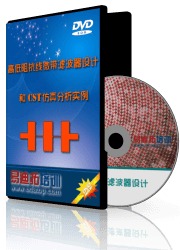- 易迪拓培训,专注于微波、射频、天线设计工程师的培养
CST2013: Low Frequency Solvers Problem Handling
This page contains a list of the most important warning and error messages in the context of low frequency solvers, together with a detailed explanation of the meaning and proposal for handling and resolution.
This model is not divergence-free and cannot be solved...
Currents are appearing / disappearing within the calculation domain. This setup is not supported...
Significant divergences have been detected for this model. They might indicate a setup which cannot be solved...
For each connected region of conductive material the total entering current has to vanish...
The current in non-pec material must be divergence-free...
Current sources in magneto-(quasi-)static simulations are usually required to form closed current loops or to end at perfect electric conductors (PEC) or at electric boundary conditions. Otherwise currents are appearing or disappearing inside the calculation domain, which violates Ampere's law. If the model is not set up correctly in this context, the solver will not converge or yield unspecific results.
The appropriate solvers check automatically if current sources are defined correctly. If this divergence check fails, an error will be printed and the solver stops. There are different possible reasons for this type of problem:
Model tolerances
Sometimes small gaps might exist within the model or at the boundaries which have to be eliminated (e.g. by using the healing tools). In this case, the model should be analyzed again.
Disconnected Current- or Voltage Paths
Sometimes not both ends of an open Current Path or Voltage Path are connected to a PEC- or conductive-part of the structure. Modify the structure such that the both ends are connected to a conductor.

Current Path with a small gap between its upper end and the PEC solid.
Unconnected or partially connected Current Ports
Like Current or Voltage-Path sources Current Ports need to be properly connected to a conductive Region or a PEC solid on both sides of the port. Usually Current Ports are located on Normal- or Electric-boundary conditions and also touch a conductive solid.

Two properly connected current ports located on a boundary.

MIND THE GAP!
The current port in front is touching the boundary with its lower edge only - likely this setup causes a divergence error.
Precomputed stationary current field
If the option "Precompute stationary current field" was activated in the Magnetostatic Solver Parameters, a precomputed stationary current field will be used as source field. This source field might have divergences which cause this error if the accuracy of the stationary solution was not sufficient. In case a stationary current field is used check the following settings for the stationary solver:
Solver accuracy: Increase the accuracy setting for the magnetostatic solver to get a better precomputed stationary current field.
Tetrahedral mesh: A low mesh quality is sometimes the reason for an inaccurate solution. Consider to refine the mesh in order to get a smoother mesh.
High ratios in electric conductivity: Consider to replace materials with very high electric conductivities by PEC material or set the conductivity value of low conductive materials to zero.
No fixed potential definition: If no PEC body and no boundary condition is associated with a fixed potential, the problem is not unique from a mathematical point of view, although it is from a physical aspect. In this case it is advantageous to define a fixed potential value of 0 V on a PEC body or to change the type of a current port from "Current" to "Potential". This might not always be an option, but if Current Ports or Potential definitions are present this should improve the quality of the solution.
If the solver still fails unexpectedly, the divergence check can be relaxed to continue the solver run, even if problems were detected. This is currently supported by the Magnetostatic Solver and can be adjusted in the corresponding Specials dialog box by activating the setting "Relax divergence check".
The current ports XXX and XXX are located on the same electric/normal boundary condition
and are connected by conductive material. This setup is not supported by the solver. Solver stops.
This error message appears if two current port definitions on the same boundary condition get connected. This happens if the material separating the current ports is conductive or of type PEC and the boundary condition is of type electric or normal. To resolve this issue one can either remove the conductive material close to the boundary or set the boundary to type magnetic or tangential. In most cases the second choice it the favored.

Two current ports driving a coaxial cable are located the same electric boundary. If the inner dielectric insulator has a small conductivity the setup gets invalid. To resolve the problem set the boundary condition to type magnetic or tangential. If one is not interested in leakage effects the conductivity of the inner insulator can be set to zero as well.
CST微波工作室培训课程套装,专家讲解,视频教学,帮助您快速学习掌握CST设计应用
上一篇:CST2013: Import Problem Handling
下一篇:CST2013: File (Backstage View)
CST中文视频培训教程 | More...
 最全面、最专业的CST微波工作室视频培训课程,可以帮助您从零开始,全面系统学习CST的设计应用【More..】
最全面、最专业的CST微波工作室视频培训课程,可以帮助您从零开始,全面系统学习CST的设计应用【More..】
频道总排行
- CST2013: Mesh Problem Handling
- CST2013: Field Source Overview
- CST2013: Discrete Port Overview
- CST2013: Sources and Boundary C
- CST2013: Multipin Port Overview
- CST2013: Farfield Overview
- CST2013: Waveguide Port
- CST2013: Frequency Domain Solver
- CST2013: Import ODB++ Files
- CST2013: Settings for Floquet B










